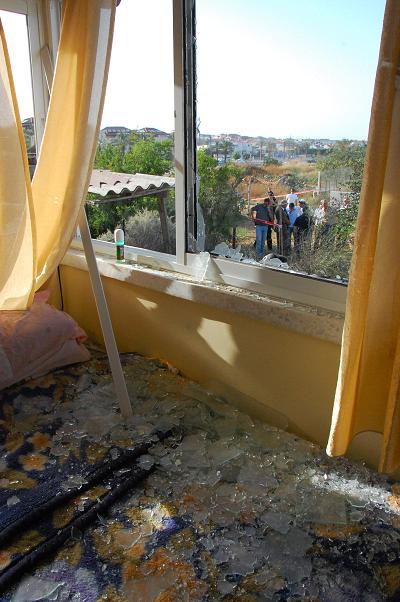(Israelnationalnews.com) As this is the third ceasefire in three years between Hamas and Israel – with over 226 rockets being fired in the seven months since Operation Cast Lead – you will be hard pressed to find a person in Sderot who believes in the relative quiet. There is a common joke that it isn’t a true ceasefire, but more like we “cease” and they “fire”.
One of the most visible developments is the extensive construction of bomb shelters underway throughout Sderot. There is a huge influx of building materials for private one-room bomb shelters attached to people’s homes and whole apartment complexes adding bomb shelters to each level of the building. Wherever you look in this small city of 19,500 residents, you can see thousands of shekels being poured into preparation for future rocket attacks.
Besides the various terror attacks on the border that have thankfully been thwarted by the Israel Defense Forces, there remains steady smuggling of terror weapons into the Gaza Strip. According to Israel Security Agency Chief Yuval Diskin, “Hamas is continuing to increase its strength, manufacture longer-range rockets and smuggle rockets of a far superior quality.” One of these newer Grad missiles, coming straight from Iran with heightened targeting capabilities and explosive power, hit a school in Ashkelon over the Sabbath back in February. In early June, Hamas terrorists packed horses full of explosives and attempted to attack the IDF on the Gaza border.
The last home that was hit in Sderot on May 19, 2009. (Photo: Noam Bedein)
The situation in southern Israel is quieter than during Operation Cast Lead; however, as one can see from various small news bites, it is a very delicate silence.
As this delicate silence continues, the more trouble the victims of this once daily reality of rockets have with any sort of treatment. The emergency center that treats victims of the Qassam attacks shut down this June. The two centers that treat the vast psychological damage to the people of the region will shut down in the coming months due to lack of funding. One of the private sponsors of the centers, the International Fellowship of Christians and Jews, cut their funding due to a restructuring of priorities.
While the medical professionals diagnose people with Post-Traumatic Stress Disorder as frequently as they do a common cold, there remains the unique Sderot phenomenon that there is no “post-trauma” yet due to the continuation of the rocket fire. Dr. Danny Brom, the founder and director of the Israel Center for Treatment of Psychotrauma, says that, unlike the northern cities of Haifa and Kiryat Shemona following the 2006 war with Hizbullah, Sderot is “not in a post-traumatic reality.” Even though the need for trauma treatment is ever present, the centers serving Sderot and the surrounding areas are closing.
After the widely covered Operation Cast Lead in the Gaza Strip this past December and January came the widespread criticisms and condemnations of Israel’s actions. The United Nations established a fact-finding mission on the Gaza conflict. Although the Israeli government did not officially participate, private individuals flew to Geneva to testify about the rocket fire in southern Israel. This past July, along with Noam Shalit, Sderot Media Center Director Noam Bedein gave testimony, with the assistance of videos, explaining the human side of the daily reality of rocket fire on civilians.
This is the third “quiet period” Sderot has seen. During the first, over 300 rockets landed in the region and during the second, over 500; now, the number is steadily rising to over 226 rockets. The world may have found new topics in the news, but that has not stopped the rockets. Sderot is continuing to go about its daily life through the eerie quiet, knowing well that the rockets will return in full force in due time.











